
Authors: Jack McCarthy, Colman McCarthy, Carlos Pablo Sigüenza, Gergo Suto, Colum Gibson, Claire Downey and Adam Boland , July 2024
Year: 2024
Ireland has registered a relatively poor score in terms of the Circular Material Use Rate (CMUR) – a key circular economy metric of the European Union. Ireland’s policy ambitions are to surpass the EU average in this metric by 2030. The aims of the CAIR (a Critical Analysis of Ireland’s circular material use Rate) project were to firstly identify factors driving Ireland’s relatively low CMUR performance and secondly to identify actions through which Ireland’s CMUR score could be improved. The research activities included an interrogation of how the CMUR metrics function, analysis of the data used, a comparison of the data and statistical profile of Ireland with three other Member States, and the development of proposals for improving Irelands CMUR score.

Authors: David Styles, Colm Duffy, Remi Prudhomme, George Bishop, Mary Ryan and Cathal O’Donoghue, June 2024
Year: 2024
Ireland’s agriculture, forestry and other land use (AFOLU) sector accounts over 40% of national greenhouse gas (GHG) emissions. The Climate Action and Low Carbon Development Act 2021 commits Ireland to reach a legally binding target of net-zero GHG emissions by 2050, yet emissions from this sector continues to rise. Globally, it is assumed that land management will provide a net carbon sink to offset residual emissions from agriculture and other sectors. However, Ireland’s land sector is a large net emitter of carbon dioxide (CO2) owing to large areas of drained organic soils and low afforestation rates relative to forest harvest rates. SeQUEsTER uniquely applied a back-casting approach to identify what “solutions” to net zero could look like for the agriculture and land sector.
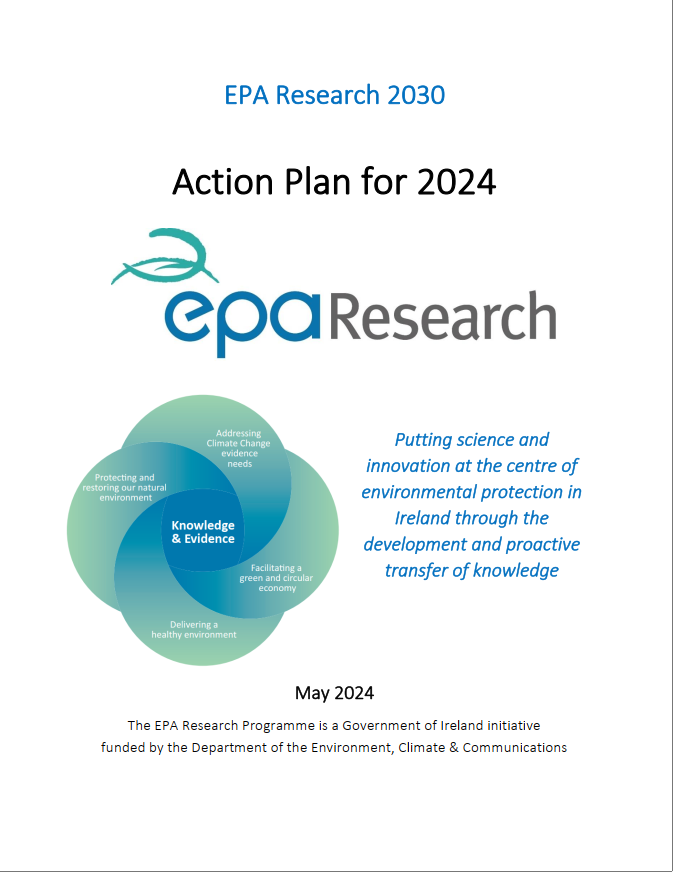
Authors: EPA, May 2024
Year: 2024
Summary: This Action Plan 2024 provides a guide for the planned activities of the EPA Research Programme in 2024.
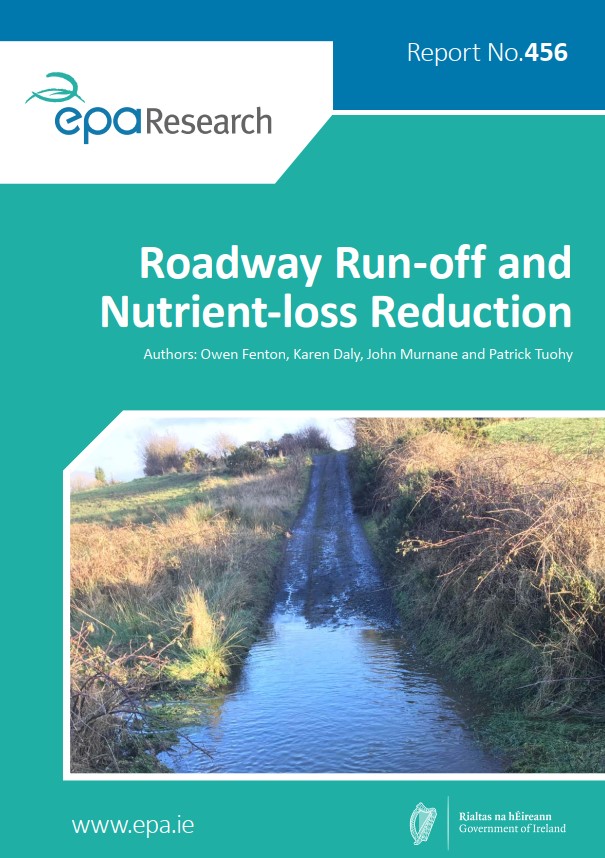
Authors: Owen Fenton, Karen Daly, John Murnane and Patrick Tuohy, May 2024
Year: 2024
The Nitrates Directive aims to protect water quality across Europe by preventing nutrients from agricultural sources, including livestock manures and other fertilisers, from polluting ground and surface waters, and by promoting good farming practices. Ireland’s Nitrates Action Programme states “There shall be no direct runoff of soiled water from farm roadways to waters”. Despite existing regulation, there has been minimal research in Ireland pertaining to the source, content, pathway, mobilisation and impact of roadway runoff. The Roadrunner project reviewed mitigation measures to treat roadway runoff, developed an on-farm visual tool to find and document connectivity between roadway runoff and waters, and provided the evidence base to define roadway runoff as a unique sub-component of the nutrient transfer continuum.
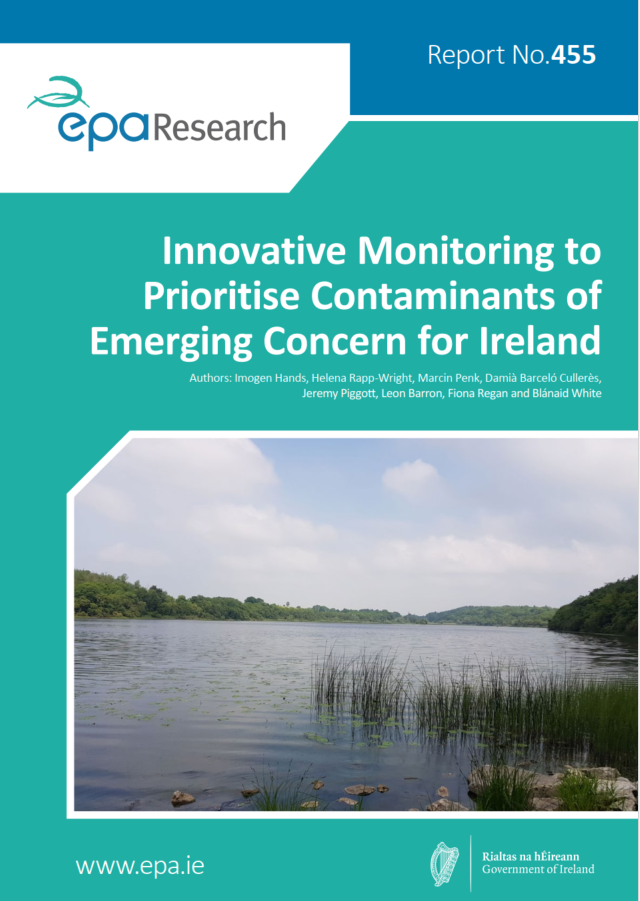
Imogen Hands, Helena Rapp-Wright, Marcin Penk, Damià Barceló Cullerès, Jeremy Piggott, Leon Barron, Fiona Regan and Blánaid White, April 2024
Year: 2024
Contaminants of Emerging Concern (CECs) can be defined as “any synthetic or naturally occurring chemical or any microorganism that is not commonly monitored in the environment but has the potential to enter the environment and cause known or suspected adverse ecological and/or human health effects”. This research provides a comprehensive insight into the occurrence and fate of CECs in wastewater treatment effluent on entry to Irish receiving waters. Two wastewater treatment plants (WWTPs), one urban and one rural were monitored for one year to identify the temporal and spatial occurrence of more than 100 CECs in the aquatic environment and the WWTPs influents and effluents. This work allows contaminants that are not efficiently removed during treatment of municipal effluents to be highlighted and enables an evidence-based prioritisation list of CECs to be developed in Ireland.
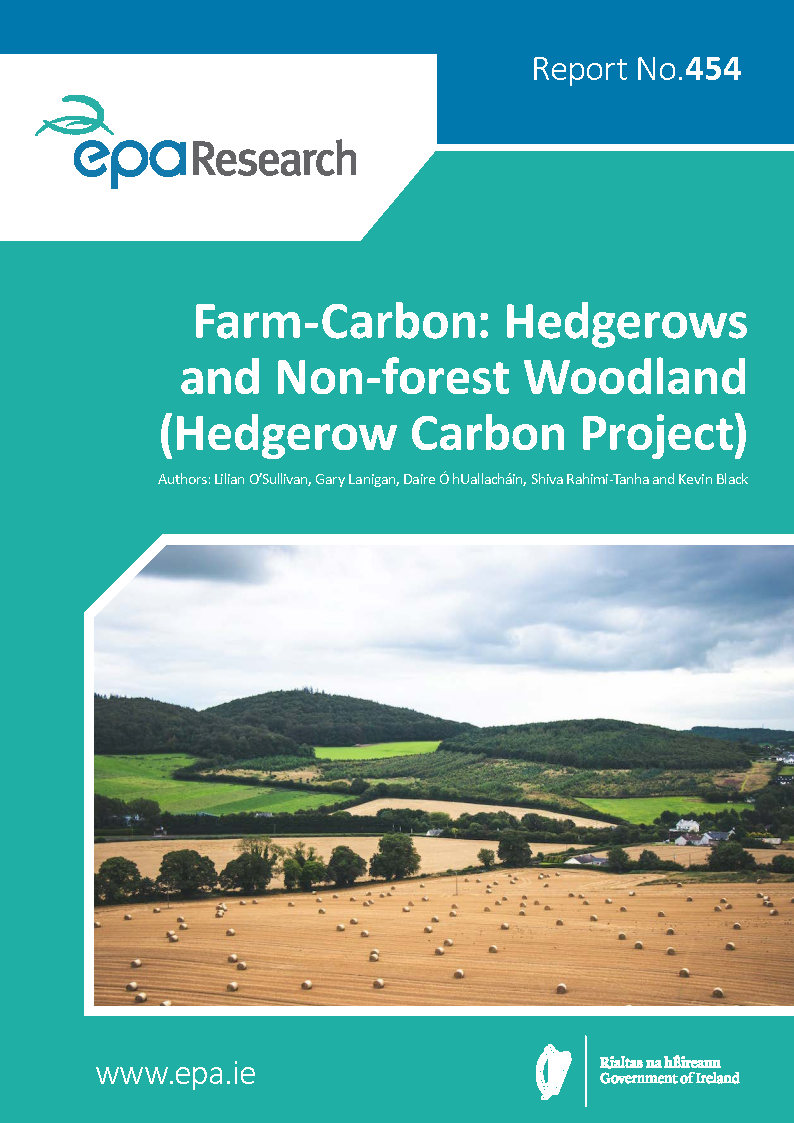
Authors: Lilian O’Sullivan, Gary Lanigan, Daire Ó hUallacháin, Shiva Rahimi-Tanha and Kevin Black, March 2024
Year: 2024
The EU aims to be climate neutral by 2050. Central to this ambition is land management that supports carbon sequestration, and enhancement of carbon sinks or the reversal of their emissions. Current national greenhouse gas emission inventory submissions to the United Nations Framework Convention on Climate Change show that the land use, land use change and forestry (LULUCF) sector is a net source of emissions in Ireland. However, emissions and removals are not currently disaggregated in national emission inventory estimates. Currently, hedgerows are not explicitly accounted for in national inventory reports.
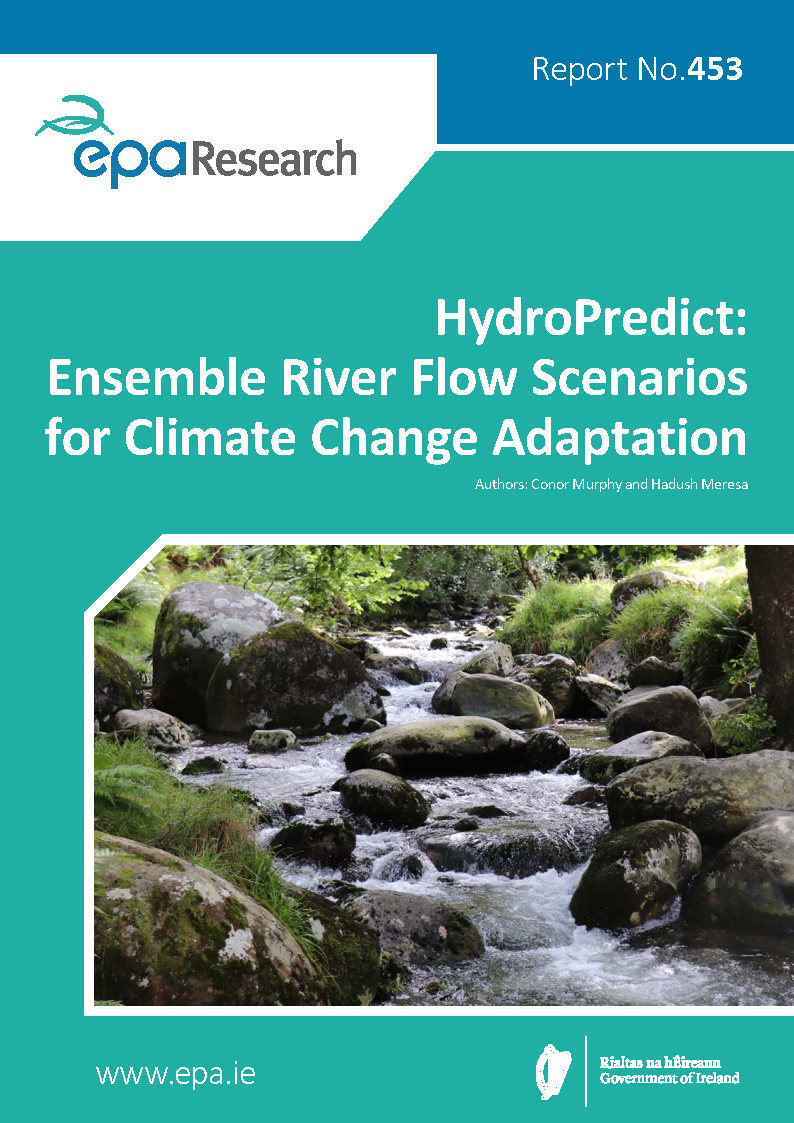
Authors: Conor Murphy and Hadush Meresa, March 2024
Year: 2024
Higher greenhouse gas emissions are associated with large reductions in average summer and annual low flows in rivers. Changes in meteorological droughts in Ireland are driven by a transition to wetter winters and drier summers, together with increased evapotranspiration losses during summer and late spring months, leading to more frequent spring and summer droughts. The magnitude of future drought changes depends on future greenhouse gas emissions, with the most substantial changes found for higher emissions. Adapting to climate change in the water sector should place an increased emphasis on addressing the changing nature of droughts, especially across sensitive sectors. Using the latest climate models and emissions storylines, this research project assessed the projected impacts of climate change on flow conditions and droughts across 37 river catchments in Ireland.
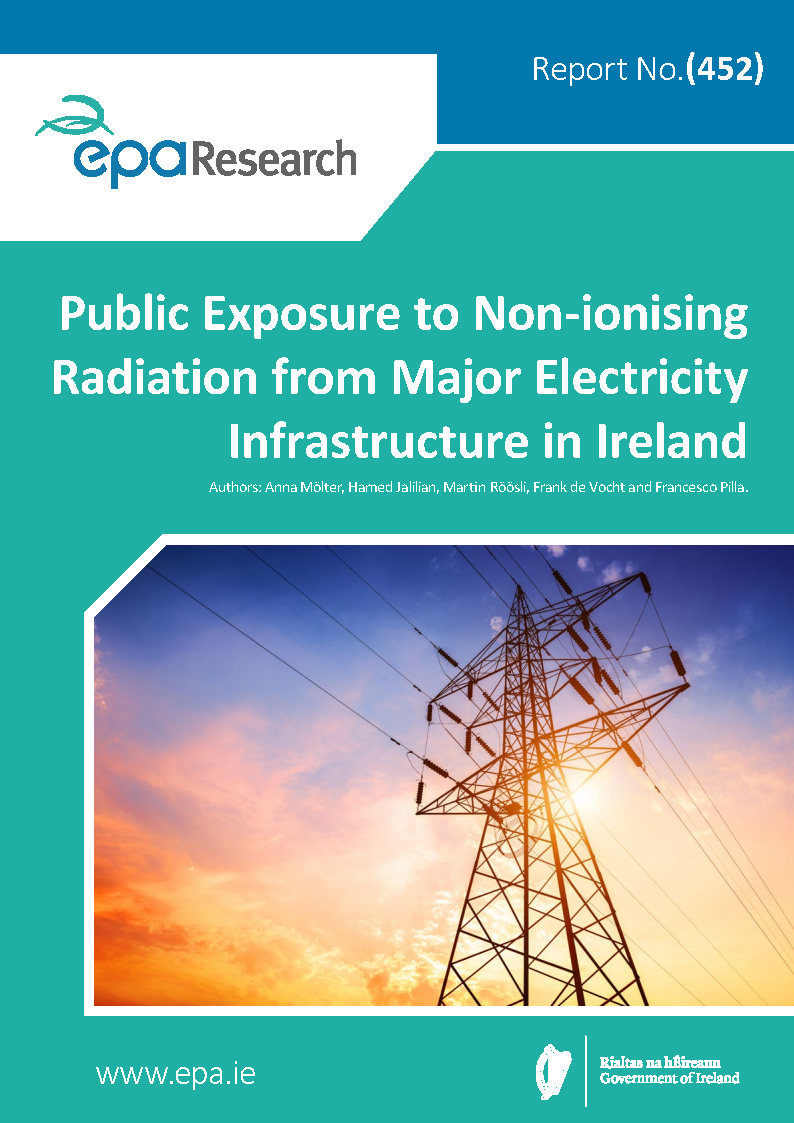
Authors: Anna Mölter, Hamed Jalilian, Martin Röösli, Frank de Vocht and Francesco Pilla, March 2024
Year: 2024
Major electricity infrastructure, such as high-voltage power lines, transformer stations and substations, emits non-ionising radiation in the form of extremely low-frequency electromagnetic fields (ELF EMFs). Potential health effects associated with long-term exposure to ELF EMFs have been a concern since the late 1970s. However, epidemiological studies of health risks of ELF EMF exposure have reported varying results, and a causal relationship has not been established. This research report presents a review on the published literature in relation to populations exposure to ELF EMFs, epidemiological studies on associated health risks, current EU policies, monitoring strategies, methods to reduce exposure and strategies for risk communication.
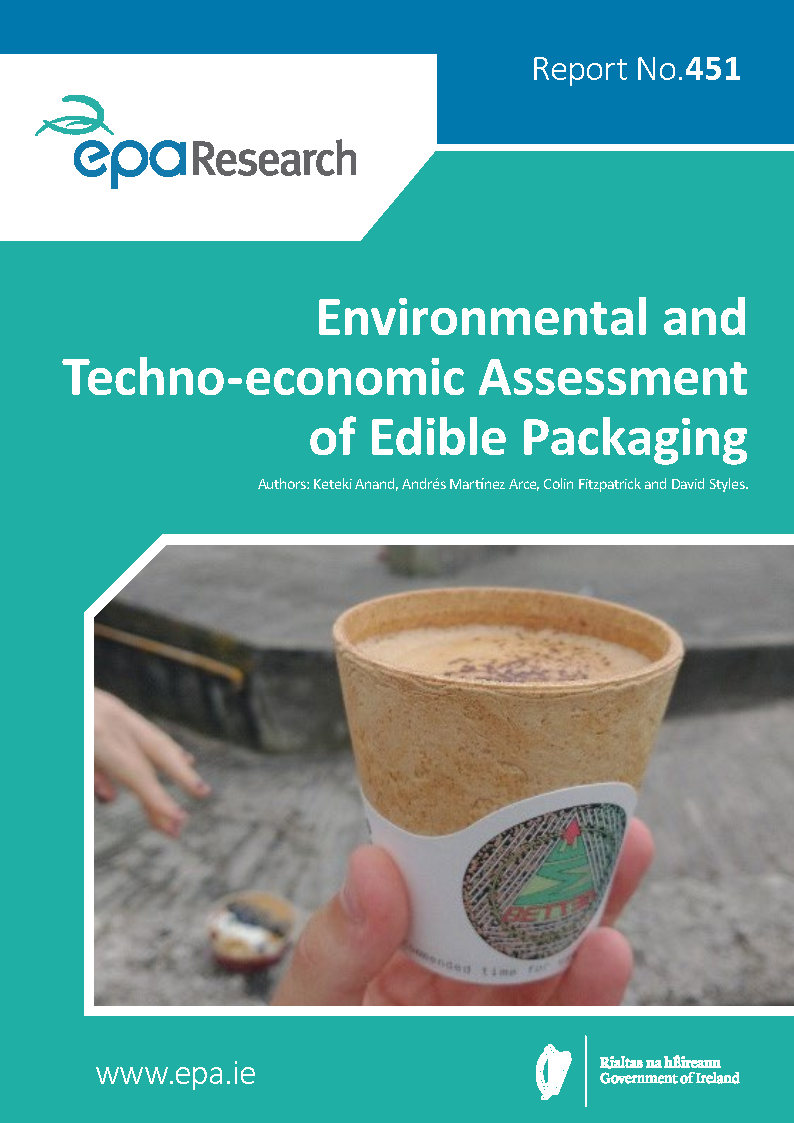
Authors: Keteki Anand, Andrés Martínez Arce, Colin Fitzpatrick and David Styles, March 2024
Year: 2024
It is estimated that 550,000 cups per day are used in the Irish market alone, and that this could increase to an annual total of 300 million cups per year by 2025. Although there is a common perception among consumers that paper cups are recyclable, and thus a sustainable option, this is not necessarily true. These cups are lined with plastic, which is difficult to separate from the paper, and most paper cups are sent to residual waste streams for landfill or incineration. The concept of edible packaging has the potential to help address littering and waste management challenges from single-use disposable cups. EAT-Packaging undertook a life cycle assessment across a range of relevant cup types and engaged with national stakeholders to develop scenarios to identify where, when, and how edible cups (or alternative options) could reduce environmental impact for the functional unit of a cup containing a single drink.

Authors: Ilaria Bernardini, Mark Tucker, Moreno Stellini and Emmanouil Kakouris, February 2024
Year: 2024
Extreme weather events such as storms, landslides, river floods and coastal phenomena have threatened and damaged many different regions across Ireland. These events, while rare and often short-lived, can have a devastating impact on critical infrastructure systems. As a result of climate change, these events are becoming more frequent and more intense, affecting not only physical infrastructure but also the environment and society as a whole. Using risk-based approaches in assessing the impacts of extreme weather events and climate change is a well-established method of identifying the most vulnerable infrastructure, assessing the risks posed to that infrastructure and developing strategies to minimise those risks. This report presents an overarching risk assessment methodology for assessing risks posed to critical infrastructure by climate change.
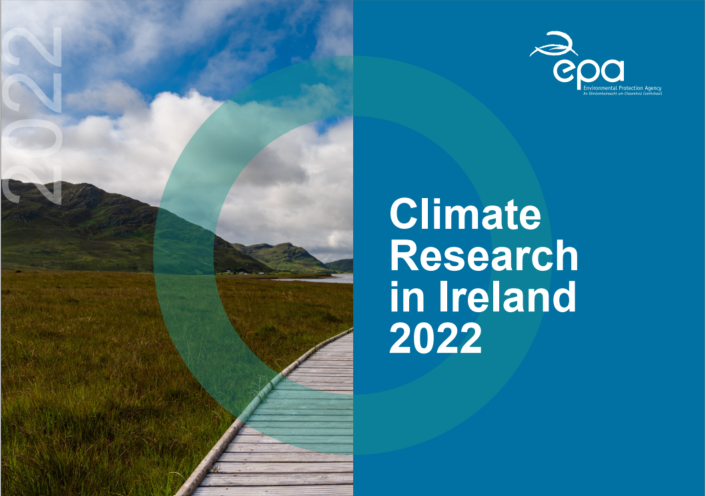
The Climate Research Coordination Group (CRCG) supports and promotes coordination and knowledge exchange between state bodies involved in funding climate research in Ireland., February 2024
Year: 2024
This report has been prepared by the EPA on behalf of the Climate Research Coordination Group
-449.jpg)
Authors: Conor Murphy, Kevin Leonard, Rory Moore and Stephen Flood, February 2024
Year: 2024
The island of Ireland is one of the most open economies in the world for trade and finance. While Ireland’s open economy, trade and finance links have helped to generate significant wealth and improve living standards, this also makes Ireland among the most vulnerable to climate change’s impacts on international trade. Transboundary Climate Risks (TCRs) cross national borders and are associated with the impacts of climate change. The Transboundary Climate Risks for the Island of Ireland (TCRII) project undertook a literature review and worked with stakeholders to identify approaches for the assessment of TCRs and synergies that can be leveraged on an all-island basis. The findings informed recommendations for better accounting for these emerging risks, to realise the national climate objective of achieving a climate-resilient economy and society by 2050.
.jpg)
Authors: Dearbháile Morris, Niamh Cahill, Catherine Burgess, Enda Cummins, Finola Leonard, Brigid Hooban, Carlos Chique, Ciara Tyrrell, Shun Wang, Ciarán Monahan, Aoife Joyce, Kelly Fitzhenry, John Cullinan, Georgios Miliotis, Louise O’Connor, Deirdre Prendergast, Martin Cormican, Rita Gately, Rajat Nag, Fiona Brennan, Fiona Walsh and Xinmin Zhan, February 2024
Year: 2024
Antimicrobial resistance (AMR) is recognised globally as one of the greatest challenges to human and animal health. In 2021, Ireland’s second National Action Plan on AMR (iNAP2) strengthened Ireland’s commitment to tackling the challenge of AMR using the ‘One Health’ approach. The role of the environment in the persistence and transmission of AMR is the least studied element of the One Health paradigm. This was further highlighted by the analysis commissioned by the EPA in preparation for iNAP2. The findings of the AREST project add significantly to our understanding of this environmental dimension of AMR by (1) providing evidence of the extent of contamination of the Irish environment with antimicrobial-resistant organisms and antimicrobial resistance genes of clinical concern, (2) generating national-level data on the key sources, hotspots and drivers of AMR in the environment from the human health and agriculture sectors, and (3) providing key data and recommendations.

Authors: Ricardo Bermejo, Nessa Golden, Sara Haro, Sita Karki, Michéal MacMonagail,Sara García-Poza, Teresa Navarrete-Fernández, Benedikt Brunner, Kay Knöller,Mark Healy, Owen Fenton, Per-Erik Mellander and Liam Morrison., January 2024
Year: 2024
Eutrophication of waters and consequent algal blooms place significant pressure on marine ecosystems. Reducing the nutrient load of these waters is essential for ecosystem restoration. The MACRO-MAN project developed innovative methods to assess the environmental quality of Irish estuaries, and to identify drivers of and management strategies for macroalgal blooms. The potential risks associated with macroalgal blooms were considered in a global change context (e.g., climate change, emerging contaminants, biological invasions) in order to investigate the impact on ecosystem functioning and services provided by Irish estuaries. Using Earth Observation technologies, the project mapped the spatial and temporal distribution of brown, green and red macroalgal blooms in Irish estuaries, including the reconstruction of the invasion of a red Asian seaweed (Gracilaria vermiculophylla) in the Clonakilty estuary.
-Oct23-v1_Part1.jpg)
Authors: Conor Murphy and Sam Grainger, January 2024
Year: 2024
Droughts are pervasive and hazardous events that impact multiple domains, including agriculture, water resource management, ecological management, infrastructure, waterway navigation and forestry. A drought in Ireland in 2018, had severe socio-economic and environmental impacts across sectors: agriculture suffered from reduced grass growth, fodder shortages and decreased crop yields, peatlands faced increased wildfire risk and ecological degradation and water management was challenging amid supply issues. In addition, canals, waterways, and rivers experienced weed growth, navigation problems, fishing restrictions and reduced fish health and forestry saw increased tree deaths, especially in peatland plantations. The CROSSDRO project collated a network of river flow gauges across Europe, covering the period 1962–2017, for the analysis of hydrological drought.
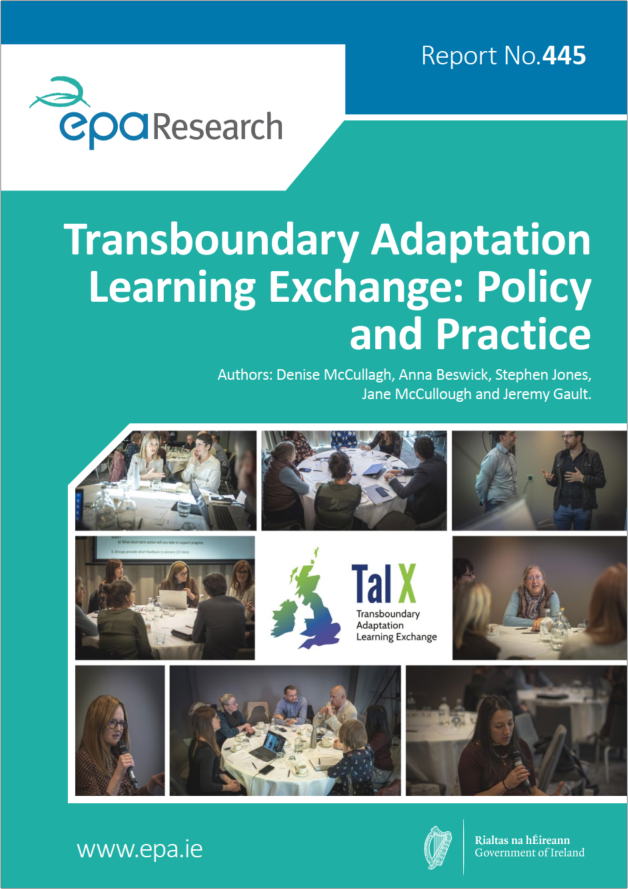
Authors: Denise McCullagh, Anna Beswick, Stephen Jones, Jane McCullough and Jeremy Gault, December 2023
Year: 2023
The need for transformational climate adaptation that moves beyond the business-as-usual approach currently employed by a large majority of governments is becoming increasingly evident as the environmental, social and economic benefits of early and proactive adaptation are observed. The pressures of climate change require society-wide ownership of adaptation. However, for this to happen, all voices need to be represented in decision-making throughout the adaptation process. An assessment of the national climate adaptation policies of the five jurisdictions of Ireland and the UK was conducted to identify barriers and enabling conditions for adaptation in each of the jurisdictions.
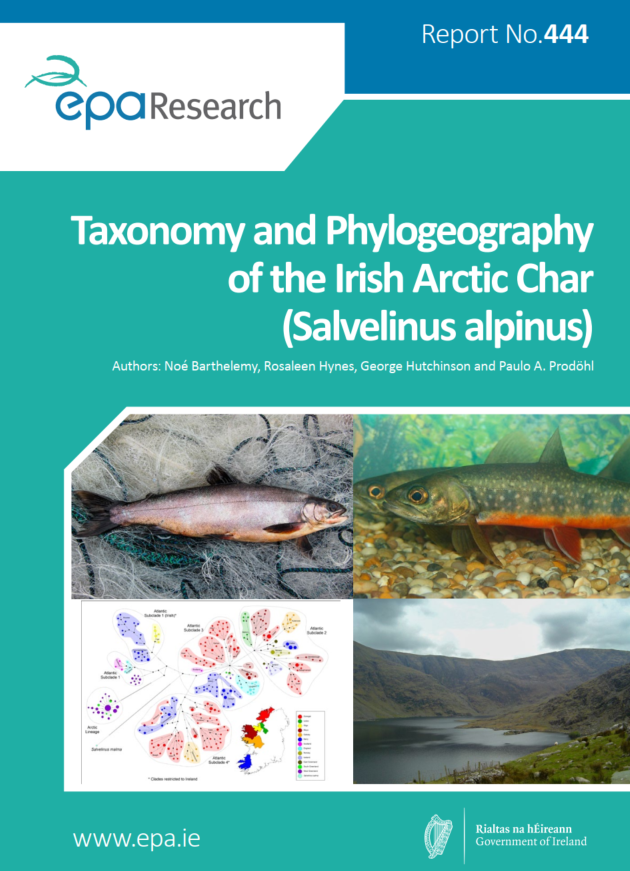
Authors: Noé Barthelemy, Rosaleen Hynes, George Hutchinson and Paulo A. Prodöhl, December 2023
Year: 2023
Salmonid Arctic char is a freshwater fish species vulnerable to low oxygen levels, rising temperatures associated with global warming, threats from invasive species, and water abstraction activities. There is an urgent need for effective conservation and management of Irish Arctic char, as it is recognised as “vulnerable” in the Irish Red Data Book. The study examined the role of scientific communication in influencing policymakers' decisions on conservation of this species.